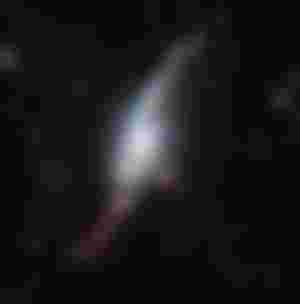
Henize 3-1475 (also known as IRAS 17423-1755) is a protoplanetary nebula located at a distance of 18,000 light-years in the constellation of Sagittarius. The morphology of the nebula resembles a garden sprinkler, thus it is not a surprise that many astronomers call it the Garden-sprinkler Nebula.
Henize 3-1475 is a great example of a planetary nebula that is in its early phase (hence the protoplanetary classification). The central star that is responsible for creating this spectacular nebula is 12,000 times more luminous than the Sun. The central star has not yet ejected its complete shell, thus it is not hot enough to ionise the shell of gas, so the nebula does not shine. The reason that we see the expelled gas is due to the light that it reflects. When the star eventually will eject its shell, it will glow and transit to a planetary nebula
The most interesting features of the nebula are a thick torus of dust around the central star, and the two S-shaped jets that emerge from the polar regions of the central star. The jets form from gas outflow, where gas travels at hundreds of kilometers per second. Formations of such structures most likely comes material ejection in the opposite direction and precesses once every thousand years.
Image Credit:ESA/Hubble & NASAHenize 3-1475 (also known as IRAS 17423-1755) is a protoplanetary nebula located at a distance of 18,000 light-years in the constellation of Sagittarius. The morphology of the nebula resembles a garden sprinkler, thus it is not a surprise that many astronomers call it the Garden-sprinkler Nebula.
Henize 3-1475 is a great example of a planetary nebula that is in its early phase (hence the protoplanetary classification). The central star that is responsible for creating this spectacular nebula is 12,000 times more luminous than the Sun. The central star has not yet ejected its complete shell, thus it is not hot enough to ionise the shell of gas, so the nebula does not shine. The reason that we see the expelled gas is due to the light that it reflects. When the star eventually will eject its shell, it will glow and transit to a planetary nebula
The most interesting features of the nebula are a thick torus of dust around the central star, and the two S-shaped jets that emerge from the polar regions of the central star. The jets form from gas outflow, where gas travels at hundreds of kilometers per second. Formations of such structures most likely comes material ejection in the opposite direction and precesses once every thousand years.
Image Credit:ESA/Hubble & NASA
